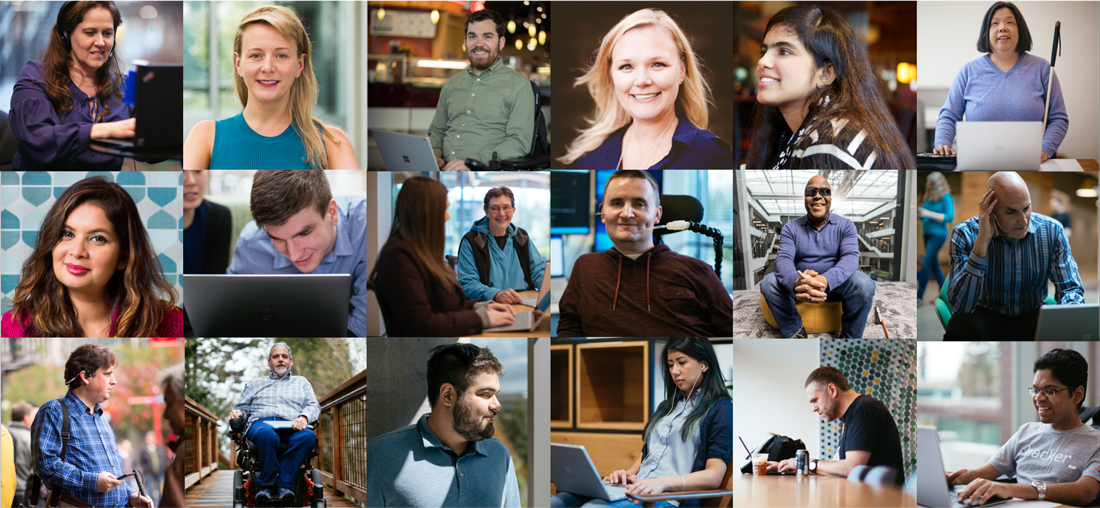Today, we released our annual diversity and inclusion report, including U.S. disability representation for the first time.
This is a small but incredibly important step on our journey with disability inclusion, a journey intrinsically linked to Microsoft’s mission – “to empower every person and every organization to achieve more.” The word every is significant, it includes the one billion-plus people with disabilities around the world. To deliver on that promise, we must have people with disabilities in the core of our company, to share their expertise and strength to ensure that our products meet the needs of our customers and employees. Some of our proudest moments in the last few years have been the innovations driven by our talent with disabilities, from the Xbox Adaptive Controller to Immersive Reader to upcoming wellbeing features in Teams.
Disability impacts more of us than you might realize. Most disability is invisible or nonapparent. Put simply, you would not know if a person has a disability or not. Diabetes, dyslexia and depression are three great examples of this. To understand our representation, we need data, which means cultivating a workplace where employees can be confident, have pride in their disability and, ultimately, confidentially self-identify whether they have a disability or not. For the last several years, our Count Me In campaign has been encouraging our employees to self-ID, which has helped us better understand our representation.
As of September 1, 2020, of the 46.1% of US employees who responded to the survey, 13.2% self-identified as having a disability. This amounts to 6.1% of employees in the US identifying as a person with a disability. While we are proud of the progress, there is clearly more to do.
Our ambition is to fully represent the population of people with disabilities across the globe, and we take that seriously. That said, numbers alone do not tell the full story; every day we hear stories of talent with disabilities at Microsoft having meaningful impact on their peers, team, culture and products. Also, with the disproportional impact of the pandemic on disability employment being top of mind we are publishing a new disability employment resource center that shares learnings and toolkits to empower and support employers and job seekers alike.
These are small steps on a longer journey of building a culture of disability inclusion and accessibility both in the workplace and in society. Disability inclusion has been a key part of that journey, and none of our progress today would have been possible without the insight of disabled talent. I am proud to be counted as one of those with disabilities at Microsoft. My disability is a strength, and realizing that was the biggest turning point for me both personally and in the workplace. My story is one of many and I encourage you to check out our disability stories page to hear from some amazing employees that are part of our community. For everyone on this page, there are hundreds more yet to be told.
To read more about our journey with disability inclusion, please go to www.microsoft.com/inclusivehiring. For more on the D&I report, do read this blog by our Chief Diversity Officer, Lindsay Rae McIntyre.

